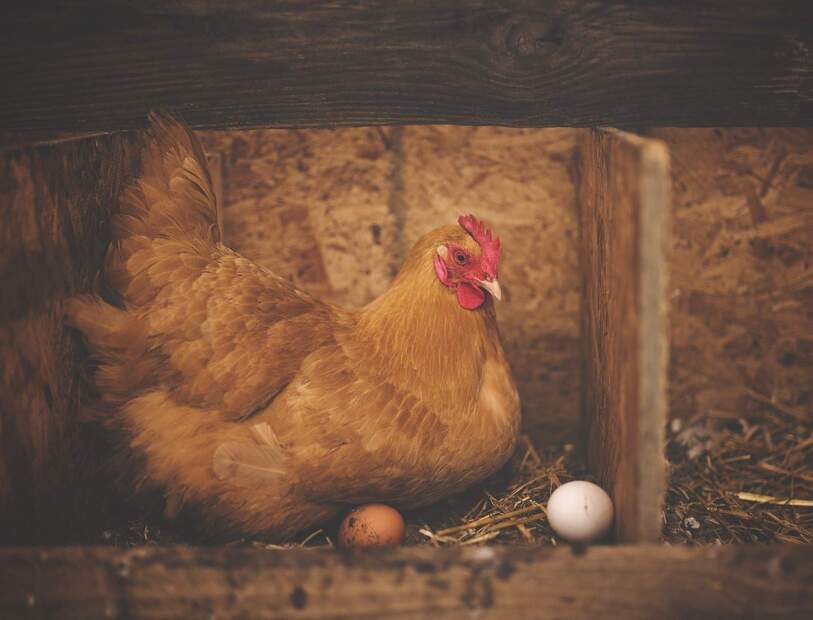
How to Raise a Chicken 101: A Farmer’s Guide To Raising Chickens
In this article, Nature’s Best Organic Feeds® provides a guide for beginning backyard farming, covering how to raise chickens from the time they hatch — whether they’re feathered, egg-laying friends or raised for meat. How to raise chickens for meat varies slightly from how you raise them to lay hard-shelled, rich eggs (the kind you’ll see by providing our premium feed!). Details like the temperature matter (regarding how to raise chickens in winter), as do the instructions on how to clean a chicken coop! Luckily, we are here to guide you through those details and more as you venture into the world of backyard farming.
Why You Should Raise Backyard Chickens
There are many benefits to owning and raising backyard chickens. Not only can you gather eggs in the comfort and convenience of your own backyard, but you’ll benefit from saving a significant amount of money in the long-term. Rather than spending money on eggs and poultry at the grocery store, you can have a steady supply right outside of your own home when raising chickens for eggs.
If you’re new to the concept of raising your own chickens, the idea of owning and maintaining a chicken coop may seem a little daunting — and messy. While raising your own chickens certainly doesn’t sound like the cleanest activity in the world, the benefits you can reap from properly raising chickens and maintaining a coop outweigh the challenges.
How to Prepare for Raising Backyard Chickens
Building a backyard chicken coop is a commitment of both time and money. Many people don’t realize all of the factors that go into building and maintaining a chicken coop before they make the decision, which can lead to problems and frustration.
Before you commit to a chicken coop, you need to first verify that your local laws allow you to have one in your backyard, and if so, what the stipulations are for constructing and maintaining that coop. Once you understand your neighborhood’s regulations on chicken coops and maintenance, you need to build your coop according to the number of chickens you’re planning to keep, along with other essential factors.
Keep in mind that your coop needs to have the proper structures in place to care for your new chicks, such as ventilation, temperature control, lighting, a predator-proof roof and other necessities. You need to establish a routine for care, as well — who’s going to feed and spend time with the chicks as they grow? What happens when you leave town? You’ll need a plan of action for regular scenarios.
Getting Eggs and Meat From Your Chickens
When your chickens start laying eggs, it’s important to have a schedule for collecting them. If given 12 to 14 hours of sunlight per day, chickens will typically lay their eggs once or twice — so you need to gather them at least once every 24 hours. Make sure that your coop has enough room for you to enter and collect eggs without disturbing your chickens’ environment too much.
Whenever you enter the chicken coop, close the coop door behind you so none of the chickens can escape. You also need to ensure that your coop has sufficient lighting, either from secure windows or overhead electrical light fixtures.
Chickens will typically start laying eggs at around 18 to 20 weeks-old. Most chickens lay their eggs consistently for around three years before egg production slows down. Many chicken owners find that their older hens give them larger eggs, despite the decreased frequency.
Another factor to consider with egg-laying hens is the season. Hens usually stop laying eggs during the winter due to the drop in temperature, but you can work around this issue by installing a heat lamp in your coop for colder months. However, there’s nothing wrong with giving your chickens a natural “break” from egg production periodically!
When your backyard flock completely stops producing eggs, you may consider using them for meat. Keep in mind that older chickens tend to have tougher meat, so the ideal time to slaughter a chicken for the tenderest meat is when the chicken is between two and three years old. If you would rather keep your older hens around, though, they tend to provide motherly support for chicks and younger hens entering the roost.
Selecting the Chick Breed & Sex
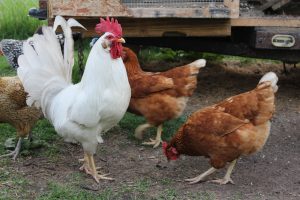
The chick breed and sex you select should accommodate several variables, including:
- – The climate where the coop is located.
- – Whether you want them for eggs, meat, or both.
- – How you’d like your flock to behave.
The chick breed and gender you select should consider several variables, including the climate of your home’s location and how you’d like your flock to behave. Some breeds do much better in the cold than others, some lay more eggs than others, and some are calmer than others. Appearance is a factor, too!
When it comes to the sex of the bird, we highly recommend more hens (female chickens) than roosters (the guys)! Roosters, though protective and often beautiful in appearance, can be jealous to the point of harm. They will often fight over the hens, not to mention they are loud and obviously cannot lay eggs. One rooster in your flock of fewer than 10 birds is a great number.
You might be thinking: “that’s a lot of information — where do I start?!” Remain calm. What better way to organize your thoughts and research than with a handy breed chart (provided by our friends at livestockconservancy.org)?!
In the link above, you will find the most common backyard chicken breeds, along with their temperature preferences, behavior styles, and egg production. It even tells you which breeds are endangered (the CPL Status)!
Tractor Supply Company sells many of these breeds online and year-round!
How & What to Feed Your Chickens
So you have the birds. Now what?!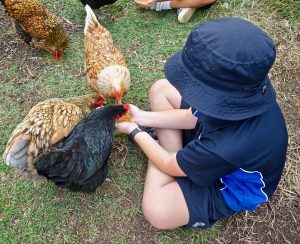
Layer Chicken Feeding Guide

Nature’s Best Organic Chick Starter/Grower Crumbles are a perfect option and should be provided free-choice (meaning the food is always available to the birds)!
With 18% protein, this chick starter feed is intentionally designed for chicks and pullets. This feed boosts energy with its strong mix of amino acids, minerals, proteins, and vitamins! As with all Nature’s Best Organic Feeds®, they’re USDA Certified Organic and Non-GMO Project Verified! No medications, animal by-products, pesticides, or growth hormones. It’s a complete feed, so you don’t need to add anything to complete the chicks’ diets, but feel free to add in calcium chips or oyster shells from around their 15th week until they lay their first eggs.
When you see those first eggs, change your flock’s meal plan to Nature’s Best Organic Egg Layer Pellets or Crumbles (both should also be provided free-choice). All products mentioned can easily be purchased online HERE (or in your closest Tractor Supply retail location)!
Meat Bird (Broiler) Chicken Feeding Guide

Always provide fresh, clean water. As with all Nature’s Best Organic Feeds®, they’re USDA Certified Organic and Non-GMO Project Verified! These high protein (21%!) pellets are also free of medications, animal byproducts, pesticides, and growth hormones. All products mentioned can easily be purchased online HERE (or in your closest Tractor Supply retail location)!
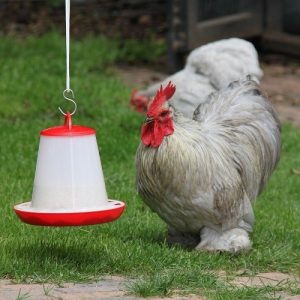
Because pecking at each other can result from boredom (or, in some cases, a lack of protein in the diet!), providing some kind of activity for the birds to occupy their time with is encouraged. We recommend you provide Nature’s Best Organic Poultry Scratch Grains to your chickens in the run during daylight hours! They’re a nutritious treat for the birds, which you should add to their complete feed. The grains promote healthy eating habits and provide a source of entertainment for the birds.
You can also entertain them with pecking stones, which are made of relatively the same ingredients as our scratch grains, but formed into a tough block that the birds can peck at when bored (also called flock blocks, scratch blocks, and/or poultry blocks).
How to Properly Shelter Chickens
If you live in a volatile climate, it’s extremely important to properly shelter your backyard chickens at all times. This prevents them from suffering from harsh climate changes and storms, but it also protects them from predators, harmful insects, and the possibility of escaping. All too often, inexperienced chicken coop owners find out the hard way how improper shelter can be detrimental to chickens and their eggs.
Location & Light
Chickens need a mixture of sun and shade and shouldn’t be exposed to excess rain or snow, just like us!
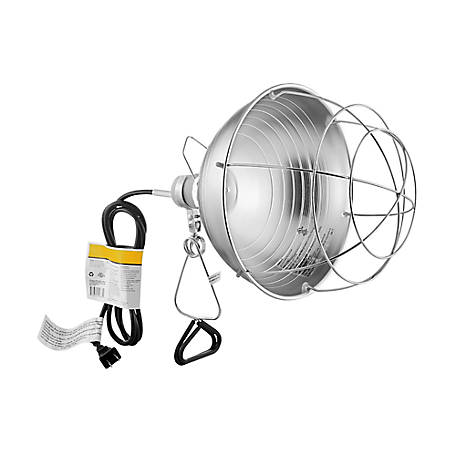
These lamps should be far away from feathers and bedding, never over 40 watts, and should only be introduced to birds that are 20 weeks or older. You can gradually increase the times the lights are on by 30-60 minutes per week with a goal of 14-16 hours of light per day. It’s optimal to add these artificial light hours to the early morning, so the light doesn’t automatically shut off when it’s black outside!
Chicks: Brooding & Temperature
You wouldn’t let a new puppy have full access to your house when you bring it home, right?
The same goes for baby chicks. The “brooding period” (lasting in the ballpark of 3-6 weeks after hatch) is a vital time in the chick’s lives, as they are the most fragile and in need of warmth and nourishment during this time. It’s important to keep the chicks in a draft-free, warm, confined area so they are closer together than they will be later. Always keep food and clean water nearby. Many backyard farmers will use an entirely different space with heating lamps (such as one section of a garage) during the brooding period to ensure the birds survive their younger weeks. When the chicks begin to grow feathers, it’s typically time to give them the space of their coop and run.
The Coop

Your coop should essentially be made up of two areas — the enclosed shelter and the run (see Mud Feet Farm’s example to the left!). The general rule of thumb size-wise is one bird per four square feet of space, with a ten-foot run per bird (or more; 10 chickens = 100 sq. ft for the run!). A large run with too-few chickens can result in death by freezing in the winter and a small run with too many birds can result in suffocation in the summer. Make sure your coop is the right size and has proper ventilation for the number of chickens you wish to raise!
The run needs to have some kind of ceiling and be protected from all sides from predators such as raccoons, foxes, and rats. If you have your run fenced in, make sure you use something like a net or mesh to enclose the top.
A small, dusty area is also essential — chickens like to bathe in dust (doesn’t seem so clean, right?!), which not only keeps them happy but also helps prevent mites. We recommend sprinkling Diatomaceous Earth in your dust bath, because bathing in it significantly reduces the chances of the birds getting lice (the most common issue in chicken coops)!
Another vital area is a nesting box for every 4-5 hens. These boxes, meant for laying eggs, are enclosed on three sides, with the entrance accessible from the coop. A lot of backyard farmers will attach these boxes somewhere higher up and on the outside of the coop’s wall to make it easy to collect eggs (eliminating the need to crawl into the coop)! Thick layers of wood shavings work well for the nest boxes and should be kept clean for clean eggs.
Many coops will have something that allows the birds to perch. Make sure their nesting boxes, food, and water supplies are no where near/below the perch (yes, we’re talking about avoiding raining chicken poop!).
Cleaning
We recommend using feed bags or newspaper under wood shavings on the floor of your coop! Using hay or straw might result in mold, which can lead to disease. Shavings are also ideal because they’re easier to scoop up and replace. Replace, replace, replace! Weekly cleanings of this kind are recommended, but a monthly deep clean is needed, too (think disinfectants — wash the floors and perches of any soil!). We recommend (during this monthly cleaning) sprinkling Diatomaceous Earth on their shavings, especially in the nesting boxes, to reduce the risk of lice. Nature’s Best Organic Chick Starter/Grower Crumbles and Egg Layer Pellets both have Diatomaceous Earth in the products’ ingredients, which helps with parasites internally as well!
If you have any concerns regarding the health of your feathered friends, please do not hesitate to reach out to your closest poultry veterinarian. The largest veterinarian directory of chicken, duck, and other poultry is found HERE.
How to Raise Baby Chicks
When you set up a chicken coop, you’ll most likely have a tiny flock of baby chicks en route to your home. While these precious little critters are relatively low-maintenance compared to other animals, they require a substantial amount of care and time. Before you get baby chicks, you need to have your coop set up to accommodate them by installing the proper structures, such as heat lamps, nesting areas, ventilation, and other essentials.
How to Hatch Eggs
If you have eggs to hatch, the best and most natural hatching route is to allow a mother to warm and protect them. Eggs should be kept warm and at a consistent temperature in a secure brooding box with soft bedding. Just make sure you have a brooding hen or two around if you’re trying to hatch eggs — they won’t hatch if there’s no hen to sit on them!
Raising Baby Chicks
Raising baby chicks takes time and patience. In addition to keeping them in a tall brooding box with soft bedding, you need to keep their environment at a consistent 95 degrees Fahrenheit and reduced by five degrees Fahrenheit each week until their environment reaches ambient temperature. Raising baby chicks requires consistent care and attention, but it’s also an incredibly rewarding experience!
How to Keep Your Chicks Healthy
In addition to keeping your chicks’ environment in optimal condition, feeding your chicks the right nutrients based on their growth stages is extremely important. Depending on your chicks’ ages, you should give them different portions and nutrient ratios. To learn more about proper chick nutrition and keeping their environment clean and hazard-free, check out this resource!
Pros and Cons of Free-Range
Another consideration for raising backyard chickens is growing them free-range or in a coop. Both options have advantages and disadvantages. Free-range offers your birds more freedom and can solve problematic behaviors, while raising them in a coop creates less mess and increases protection from predators. Here are the pros and cons of raising free-range chickens:
Pros
The pros of free-range apply to both the chickens and you! Some benefits of free-ranging your backyard chickens include:
- – Free-range chickens require less food as they search for their own supply — pecking and scratching to find bugs and worms.
- – They require less coop space, as they will mainly use that space while sleeping or during bad weather.
- – Since they use their coop less frequently, it requires less maintenance and receives less damage.
- – Their foraging instinct is satisfied, which leads to less boredom and fewer problematic behaviors.
Cons
At the same time, the cons of free-range are real. Some disadvantages of having free-range chickens include:
- – They will be more exposed to predators — prepare to lose chickens if you raise them free-range.
- – The increased exposure to predators could put you and your family at risk, as well, depending on the predator’s size.
- – They will lay eggs wherever they feel like, which creates a large, constant mess. Finding their eggs may also turn into a scavenger hunt.
- – Free-range chickens get into anything they find, so you will need to be cautious of what you have in your backyard to prevent your chickens from getting into something they shouldn’t.
A possible solution to these dilemmas is to include an enclosed “free-range area” like a chicken run or yard. This way, the chickens have more space to explore and forage without causing you problems or being vulnerable to predators.
Backyard Chickens for Beginners — Common Problems
Occasional problems with your chicken population are somewhat inevitable, and some are more severe than others.
Here are some common problems backyard chickens face.
Infrequent or Delayed Egg-Laying
If your hens stop laying eggs, that’s an issue — especially if you are raising them for their eggs. Some reasons your hens may have stopped or delayed laying eggs or are infrequent with their egg-laying patterns include:
- – Excessive broodiness.
- – Stress.
- – Disease.
- – Insufficient exposure to daylight.
Excessive Broodiness in Hens
An excessively broody hen wants to hatch her own chicks, and can you blame her? However, this presents some problems as a broody hen is not an egg-laying hen. A broody hen will stay in her nest all day, peck and squawk at anyone who comes near, and may even pick out her breast feathers. Broody hens are great if you want chicks, but not so great if you want the eggs. To prevent excessive broodiness:
- – Remove the eggs from the nesting box as soon as they’ve been laid.
- – Prevent hens from entering the nesting box after laying eggs.
- – Make your broody hen roost again.
- – Reduce the hens’ body temperature by placing frozen vegetables underneath them.
Physical Damage to the Coop
Coop damage is a common problem among backyard chicken owners. Storms, predators, or the chickens themselves can damage the coop. A damaged coop can present several issues, including increased vulnerability to predators or wandering chickens. The chickens may also make a mess of your backyard. Perform regular maintenance on your coop to prevent damage and make timely fixes when issues happen.
“Pecking Order” Problems Within the Coop
Chickens establish a natural hierarchy amongst themselves. This hierarchy is called a pecking order because the top chickens will peck at any inferior chicken that crosses them. Such problems can lead to injury, illness, and death amongst inferior chickens. These problems also worsen with boredom, so make sure your chickens are well-fed and entertained.
You can significantly eliminate potential problems in your chicken coop, like pests and diseases, by simply keeping the area clean and performing regular maintenance duties.
Contact Us for Organic & Non-GMO Certified Chicken Feed
We hope this guide has helped shed light on some key necessities in the world of backyard chicken farming. We hope your coop brings you healthy birds, rich eggs, and happy family memories! If you are interested in organic, non-medicated, and Non-GMO chicken feed to treat your backyard chickens, contact us today or feel free to buy our feed at your local Tractor Supply Company!